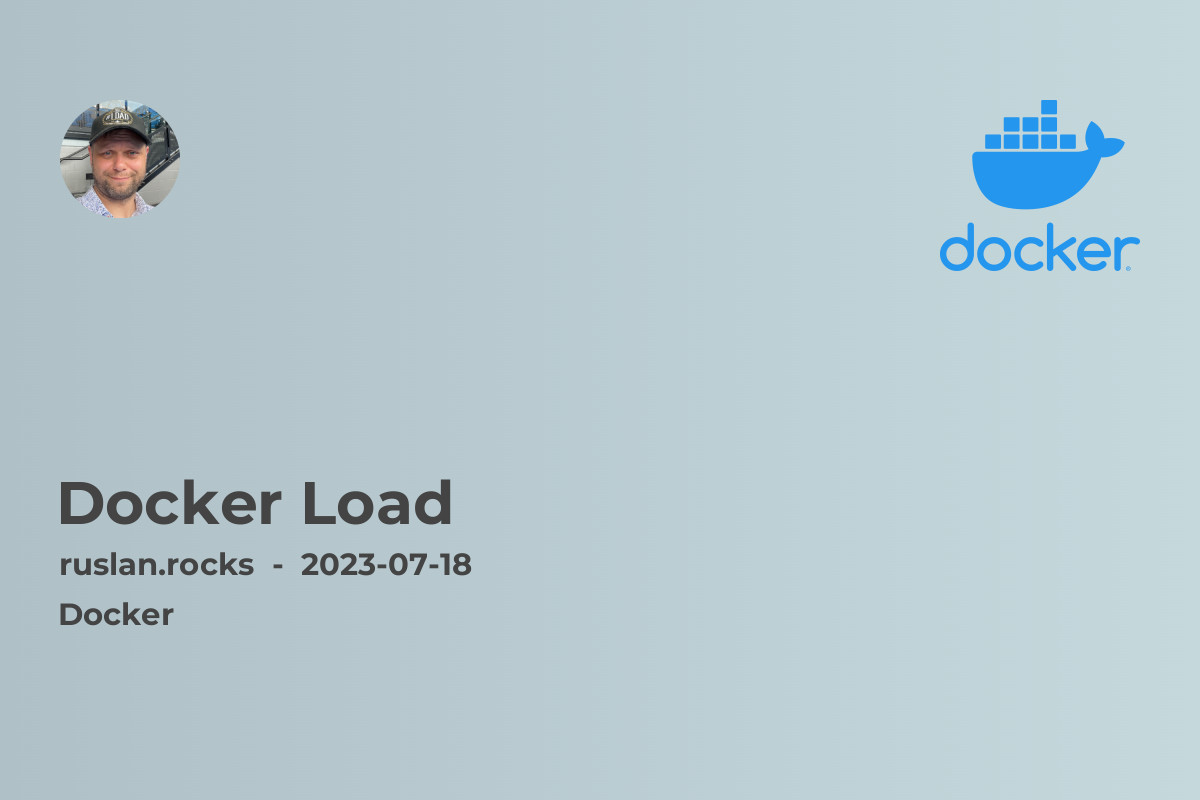
Docker Load is a command in Docker that allows you to load a saved container image onto your local Docker environment. It is a crucial step in the deployment process, as it enables you to use pre-built, ready-to-run containers. In this article, we will delve into the details of Docker Load and explore how it can streamline your containerization workflow.
When it comes to containerization, Docker is a widely adopted platform that allows developers to package their applications and dependencies into lightweight, portable containers. These containers can be easily deployed across different environments, ensuring consistency and reproducibility. However, before you can deploy a container, you need to load the container image onto your Docker environment.
How does Docker Load work?
Docker Load is a command that loads a saved container image from a file and imports it into the local Docker environment. It is the counterpart to the Docker Save command, which allows you to export a container image to a file. The Docker Load command takes the file containing the saved image as input and creates a local copy of the image.
To load a container image, you can use the following command in your terminal:
docker load -i <path/to/image.tar>
Replace <path/to/image.tar> with the actual path to the saved container image on your system. Once the image is loaded, you can use it to create containers and run your applications.
Why use Docker Load?
Docker Load offers several benefits that make it an essential tool for containerization:
-
Simplified deployment: By loading a pre-built container image, you can quickly deploy your application without worrying about installing dependencies or setting up the environment from scratch.
-
Efficient distribution: Docker Load enables you to distribute container images as files, making it easy to share them with teammates or deploy them across different environments.
-
Version control: By saving container images as files, you can maintain a version history and roll back to previous versions if needed.
-
Offline availability: Once you load a container image onto your local Docker environment, you can work on your application even when you don't have an internet connection.
-
Accelerated development: By utilizing pre-built container images, you can save time during the development process and focus on coding rather than configuring environments.
Now that we have explored the basics of Docker Load, let's take a look at how it can be used in different scenarios.
Use cases for Docker Load
1. Deployment of complex applications
When deploying complex applications that rely on numerous dependencies, Docker Load can be invaluable. Instead of manually installing all the required dependencies on each deployment target, you can load a container image that contains all the necessary components, ensuring consistency and reducing the potential for conflicts.
By using Docker Load, you can streamline the deployment process and eliminate the need for complicated setup instructions, making it easier for your team to deploy applications across multiple environments.
2. Continuous integration and deployment (CI/CD)
In a CI/CD pipeline, Docker Load plays a crucial role in the deployment stage. After the build and testing processes are complete, the container image can be saved and loaded onto the deployment environment using Docker Load. This ensures that the tested and validated image is used for the final deployment, maintaining consistency across the entire workflow.
By incorporating Docker Load into your CI/CD pipeline, you can achieve faster and more reliable deployments, reducing the risk of configuration errors and improving overall efficiency.
3. Collaboration between teams
When multiple teams are working on an application, Docker Load can facilitate collaboration by providing a standardized environment. Each team can create and save container images with specific configurations, and these images can be shared with others using Docker Load.
By sharing container images, teams can ensure that everyone is working with the same environment, eliminating potential compatibility issues and reducing the time spent on environment setup.
4. Replicating production environments
During development and testing phases, it is crucial to replicate the production environment as closely as possible. Docker Load allows you to create a local copy of the container image used in the production environment, enabling you to accurately test your application in a controlled environment.
By replicating the production environment, you can identify and resolve any compatibility issues or performance bottlenecks before deploying the application to the production environment.
5. Disaster recovery and scalability
Docker Load is also valuable in disaster recovery and scalability scenarios. By saving container images regularly and loading them when required, you can quickly recover your applications in case of system failure or data loss.
Additionally, when scaling your application horizontally, Docker Load helps you easily replicate the required container images across multiple nodes, ensuring consistency and reducing the time required to set up new instances.
Related Articles
To further enhance your understanding of Docker and related topics, check out the following articles:
-
What Is Docker Daemon: Gain insights into the Docker daemon, which acts as the control center for managing Docker containers.
-
Docker Run Command: Learn about the
docker runcommand, a fundamental command for creating and running Docker containers. -
Dockerfile Copy: Understand the
COPYinstruction in Dockerfiles and its role in copying files and directories into Docker containers. -
Docker Volumes: Discover how Docker volumes facilitate data persistence and sharing between containers.
-
Docker Networking - How To Connect Containers: Explore different options for connecting Docker containers and enabling communication between them.
By leveraging the knowledge from these articles, you can broaden your Docker expertise and enhance your containerization practices.
In conclusion, Docker Load is a valuable command that simplifies container image loading and enhances the ease and efficiency of deployment processes. By utilizing Docker Load, you can streamline your containerization workflow, enhance collaboration, and ensure consistent environments across different stages of development and deployment.
Remember to leverage the power of Docker Load to import and utilize container images effectively, making your containerization journey a smooth and efficient one.
